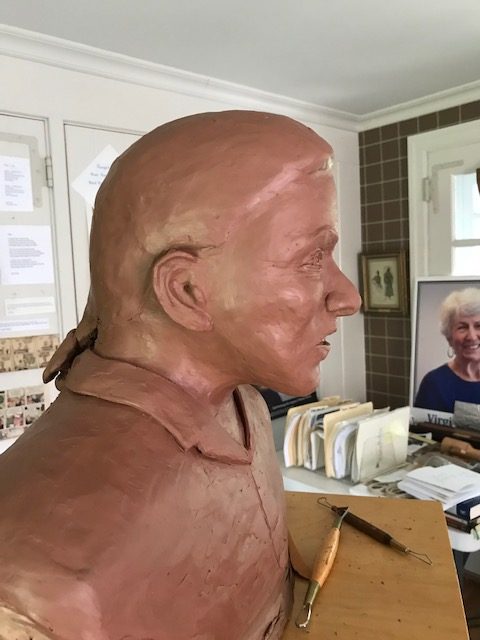“But now, O Lord, thou art our father; we are the clay, and thou art our potter; we are all the work of thy hand.” (Isaiah 64:8, KJV)
We returned a few days ago from our annual summer trip to Pentwater, Michigan, which is always an idyllic few days spent hanging out at the beach, eating lots of ice cream, and generally unplugging from the world. Part of the reason this time is so rejuvenating is because of the hospitality of my wife’s aunt and uncle, Ginny and Will. They open up their home to all of us (we often go with my wife’s sister and her family) and offer a generous welcome.
Now that I’m past the age of 50, retirement has begun to cross my mind. I’m not sure there are better models to how to live in retirement than Ginny and Will. In addition to their active volunteering, they have become artisans. Ginny is a potter (one of her chalices is used for communion at Urban Village) and Will is a sculptor and one of his creations, Abraham Lincoln, can be seen at the Abraham Lincoln Bicentennial Plaza in Lincoln City, Indiana.
During our most recent trip to Ginny and Will’s home, I learned more about Will’s latest project and the sculpting process. He currently is working on a bust of Supreme Court Justice Ruth Bader Ginsburg, but what was interesting to me was the “stuff” that is the basis of the sculpture. I’m going to let Will explain more as he shared this in an email to me:
“All such pieces start with what is called an armature. This can be made out of foam polystyrene, wire, newspaper or almost anything that will provide some inner strength, some fundamental form on which to put the clay that will ultimately create the desired likeness. After I did the bust of (Ronald) Reagan I managed to get the clay back from the foundry looking very much like the finished sculpture in clay that I had delivered to the foundry…When I started thinking about sculpting RBG and what I should use for an armature, it occurred to me that not only could I use the clay from Reagan, which would mean that I would not have to buy more clay, but also, with a little luck and perhaps even a little divine intervention, my bust of one of the outstanding judges on the US Supreme Court might end up with some unusual characteristics that I might not have otherwise been able to give her.”
Will sculpted a bust several years ago of Ronald Reagan and so, in case you missed it, the clay from President Reagan was repurposed to create Judge Ginsburg. There’s obviously some political humor here that’s hard to miss: clay from a Republican president being used to create the likeness of a judge appointed by a Democratic president. But as I thought about how these busts were created, I was also taken with the thought of the materials that you and I start with. Genesis 2:7 tells us that “the Lord God formed man from the dust of the ground.” And, of course, the Genesis 1 creation story (there are two creation stories) declares that after God created humankind, God saw it was very good. We start with very good materials.
Clay is used a few times in the Scriptures as a metaphor to describe the relationship between us and God. Isaiah uses this metaphor. So does Jeremiah (Jeremiah 18) and Paul (2 Corinthians 4). Isaiah gives us this lovely image of God as potter, molding and shaping us. But we sometimes fall into the trap of believing that what we’re made of is not clay, but the bronze of a sculpture. In other words, we believe that how we are is now is how we will always be and that will never change. But the Scriptures seem to tell us a different story. If we’re willing to be molded, God desires to form us day by day. For Christians, our hope is that that image can be shaped into something that looks at least a little like Jesus. And that’s something that I hope anyone would desire, regardless of their political persuasion.

